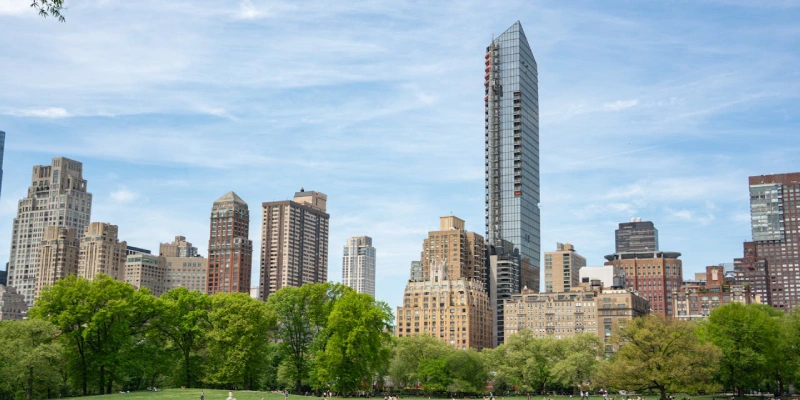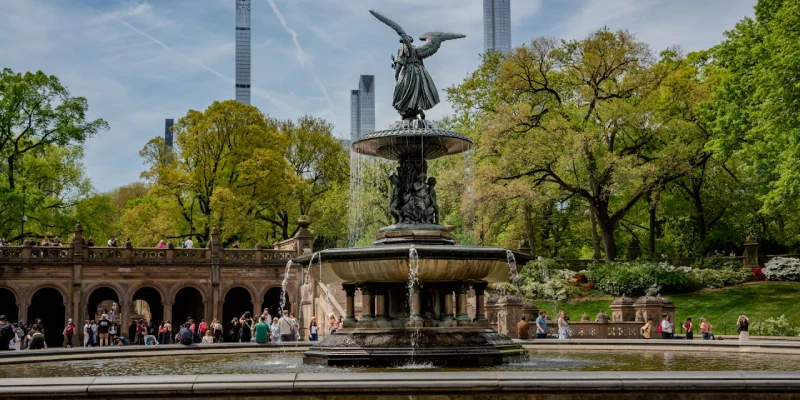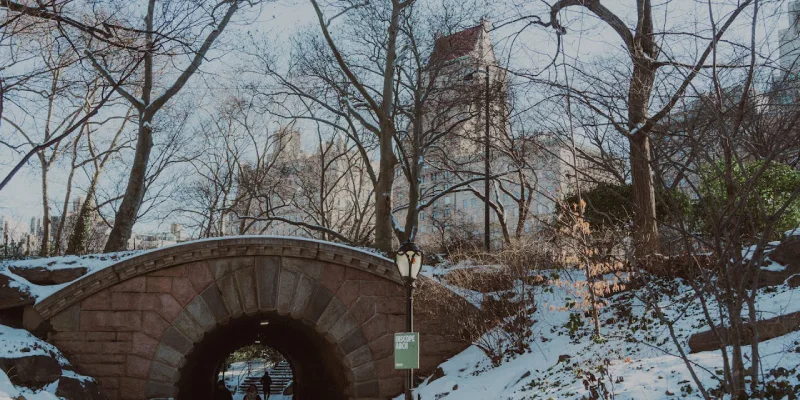Central Park: New York City's Iconic Green Oasis and Urban Masterpiece
Central Park, an 843-acre green sanctuary in the heart of Manhattan, stands as one of the world's most renowned urban parks and a vital symbol of New York City. This National Historic Landmark offers a breathtaking escape from the bustling city, providing a diverse array of scenic landscapes, recreational opportunities, and cultural experiences for millions of New Yorkers and tourists each year. It is a masterpiece of landscape architecture, beloved for its beauty and accessibility.
The vision for Central Park emerged in the mid-19th century as New York City rapidly expanded. Designed by Frederick Law Olmsted and Calvert Vaux, whose "Greensward Plan" won a design competition in 1858, the park was largely constructed between 1858 and 1876. Their intent was to create a democratic space offering respite, recreation, and the restorative beauty of nature for all citizens, a revolutionary concept for its time.
Within its expansive boundaries, Central Park features a stunning variety of elements: sprawling lawns like the Great Lawn and Sheep Meadow, serene lakes and ponds including The Lake and Conservatory Water, intricate woodlands such as The Ramble, and formal gardens like the Conservatory Garden. It also hosts numerous attractions, including the Central Park Zoo, Strawberry Fields, Bethesda Terrace, Belvedere Castle, and offers countless paths for walking, cycling, and leisurely strolls, making it an indispensable part of NYC life.
- The Greensward Plan: Olmsted and Vaux's visionary design emphasizing naturalistic landscapes and separation of traffic.
- Diverse Terrains: Skillfully crafted woodlands, meadows, hills, and water bodies creating varied experiences.
- Transverse Roads: Sunken roadways allowing city traffic to cross the park without disrupting its tranquility.
- Man-Made Waterways: Picturesque lakes, ponds, and streams, all artificially created yet appearing natural.
- Intricate Path System: Miles of meandering paths designed for strolling, carriage rides (historically), and recreation.
- Iconic Landmarks: Visit Bethesda Terrace and Fountain, Strawberry Fields (John Lennon memorial), and Belvedere Castle for views.
- Recreational Pursuits: Enjoy walking, jogging, cycling, horseback riding, ice skating (Wollman Rink), and lawn sports.
- Boating and Relaxation: Rent rowboats on The Lake or relax by the Conservatory Water with its model sailboats.
- Central Park Zoo: Discover diverse animal species in a beautifully designed urban zoo.
- Cultural Events: Attend free performances like Shakespeare in the Park or concerts at SummerStage.
- Entirely Man-Made: Every tree, lake, and meadow in Central Park was meticulously planned and constructed.
- Annual Visitors: Attracts an estimated 42 million visitors each year, making it one of the most visited urban parks globally.
- Film Star: Central Park is the most filmed location in the world, featured in hundreds of movies.
- National Historic Landmark: Designated in 1962 for its significance in landscape architecture and social history.
- Birdwatcher's Paradise: Over 280 species of birds have been sighted in the park, making it a key stop on the Atlantic Flyway.
- Urban Green Lung: Provides essential ecological benefits, improving air quality and reducing the urban heat island effect.
- Democratic Public Space: Offers a vital area for diverse communities to gather, recreate, and connect with nature.
- Cultural Hub: Hosts numerous free concerts, theatrical performances, art installations, and public events.
- Global Icon of NYC: Represents New York City worldwide, symbolizing its dynamism and green spaces.
- Economic Asset: Enhances the quality of life and boosts property values in surrounding neighborhoods, contributing to tourism.
- Central Park Conservancy: The primary role of this non-profit organization in managing, restoring, and enhancing the Park.
- Ongoing Restoration Projects: Continuous efforts to restore historic structures, landscapes, and gardens to Olmsted and Vaux's original vision.
- Horticultural Management: Expert care for the park's diverse plant collections, lawns, and woodlands.
- Sustainable Practices: Implementing environmentally friendly maintenance and conservation strategies.
- Adapting to Modern Needs: Balancing historical preservation with evolving public use and enhancing visitor amenities thoughtfully.



